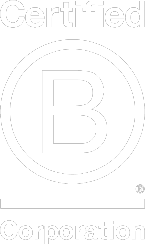Don’t get me wrong, there are a lot of benefits to a blended or hybrid workforce. In fact, the British Council of Offices found that 46 percent of office workers blend home and office working already. But it’s only fair we take a look at the not-so-positive side of it too. While it allows more freedom over time management and workplace environment, it can also be a great driver of disconnection.
Team disconnect
Having remote, part time and freelancers as part of your blended workforce, means not everyone is in the office at the same time, unless given ample preparation beforehand. This makes on-the-spot team building exercises, vital last-minute team meetings and a general rapport between colleagues harder to manage. One way to fix this potential disconnect is to host a team meeting via Microsoft Teams or your work hub once a week for everyone to discuss their projects, or just for a quick catch up! Encourage conversation and cross-department collaboration in any way that you can, and make sure to have those calendars updated.
The fix: having creative communication strategies in place.
Last-minute chaos!
A blended workforce comes with a blended work schedule. Life is busy and finding ways to balance home-life and work-life is great; it can increase employee satisfaction, promote productivity and eradicate all that stress over who’s picking up the kids and making the fancy packed lunches. While there’s a fair few benefits for this, it does mean that not everyone is working on the same schedule. For example: you have a 10am deadline for an important proposal, however there’s missing information that is vital to its completion that only Sally from finance knows about. Sally doesn’t start until 11:15 and she’s currently on her morning run with no signal – chaos ensues! Remember to always be prepared and correspond the night before, even if its just a quick five-minute call to go over what’s needed the next day. While you can’t be prepared for everything, staying connected is key to reducing panic – but be prepared to push back on those deadlines if need be!
The fix: effective digital solutions can be vital in streamlining workloads and promoting collaboration.
Embedding the brand culture
Training and embedding of the workplace culture can be left behind when it’s hard to track everybody down. With learning modules and courses being moved online, it’s hard to really gauge how much each member is taking in and putting into practice. While this can easily be corrected via in-person training days, infographics and general check-ups with your teams, the COVID-19 era has made this difficult. If you’re not careful, your company can end up having a very jumbled, confused approach to workplace culture and values – and its important this is fixed quickly so that it doesn’t affect both employee and client relationships.
The fix: a robust internal communications strategy will ensure you are able to continue to effectively communicate your culture and values.
There are pros and cons to everything in life, and this new hybrid work model isn’t exempt from that. However, these issues are, in most cases, an easy fix. We’ve spent the past year as a blended workforce thanks to COVID-19, and we’ve done a pretty good job at adapting, improving and improvising to ensure things run (for the most part) smoothly. A blended workforce offers far more benefits than setbacks, and it allows employees to have much more control over their day. Read our latest blog on the benefits of a blended workforce to see for yourself.
With Forbes describing the hybrid workforce as the future of work, the best way to make the most out of this model is to be prepared for any issues, and implement a strong plan to ensure the team remain connected, no matter whether they are in the office, out of it or work different hours etc. Deciding to ignore this evolution in the workforce due to these negatives is a great risk, and one that could potentially see you losing key employees; especially as a survey by Softchoice revealed 74% of workers would quit their job if offered more flexible options elsewhere. By taking the necessary precautions to ensure a smooth transition into this new era, you’re allowing your company to evolve into a much happier, motivated and diverse workplace that will produce even higher qualities of work.
Make sure to check out our social channels as we ask for your thoughts on the blended workforce model.
/DRPG%2045th%20Anniversary/DRPG%2045th%20White%20-%20No%20Text.png)


 Back
Back

/Blog%20Images/AEO%20SEO%20-%20Digital%20Blog.jpg)



